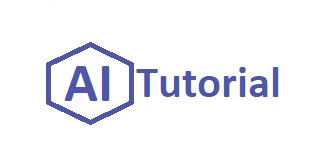🛠️ Fine-Tuning Large Language Models (LLMs)
Fine-tuning is the process of taking a pretrained LLM (like GPT, BERT, or LLaMA) and training it further on a specific dataset or task to adapt its behavior or improve its performance.
🔍 Simple definition:
Fine-tuning teaches a general-purpose model how to specialize in a specific domain or task.
🎯 Why Fine-Tune an LLM?
- Customize the model for a specific industry (e.g., healthcare, law, finance).
- Improve accuracy and relevance for certain types of questions.
- Align the model’s tone, style, or behavior with a brand.
- Save costs and resources compared to training from scratch.
⚙️ How Fine-Tuning Works (Step-by-Step)
Step
Description
1. Start with a Pretrained Model
Use a large foundation model (e.g., GPT-3, LLaMA 2).
2. Prepare Dataset
Collect domain-specific or task-specific examples.
3. Format Data
Structure examples as input-output pairs (prompts and expected responses).
4. Set Training Parameters
Choose learning rate, batch size, number of epochs, etc.
5. Train
Fine-tune the model on your dataset (usually for fewer steps).
6. Evaluate and Validate
Test the fine-tuned model on validation data.
7. Deploy
Serve the fine-tuned model in applications.
🔥 Types of Fine-Tuning
Method
Description
Example Use Case
Full Fine-Tuning
Update all parameters of the model.
When dataset is large and compute is available.
Parameter-Efficient Fine-Tuning (PEFT)
Update only small parts of the model (e.g., adapters).
Save memory and computation. (Popular today)
LoRA (Low-Rank Adaptation)
Inject tiny trainable matrices into the model layers.
Fine-tune very large models cheaply.
Prompt Tuning
Only fine-tune soft prompts (no model weights updated).
Very efficient, used for simple domain adaptation.
🧠 Popular Libraries and Tools for Fine-Tuning
- Hugging Face Transformers – A rich ecosystem for models, datasets, and training scripts.
- PEFT – Parameter-Efficient Fine-Tuning library from Hugging Face.
- DeepSpeed – High-performance deep learning training optimization library by Microsoft.
- LoRA Implementations – Including QLoRA for quantized models and resource-efficient fine-tuning.
🚀 Example: Fine-Tuning a Text Classifier (Python – Hugging Face)
from transformers import Trainer, TrainingArguments, AutoModelForSequenceClassification, AutoTokenizer
model_name = "bert-base-uncased"
model = AutoModelForSequenceClassification.from_pretrained(model_name, num_labels=2)
tokenizer = AutoTokenizer.from_pretrained(model_name)
# Tokenize your dataset
train_encodings = tokenizer(["Sample text 1", "Sample text 2"], truncation=True, padding=True)
train_labels = [0, 1]
# Define Trainer
training_args = TrainingArguments(
output_dir="./results",
num_train_epochs=3,
per_device_train_batch_size=8,
evaluation_strategy="epoch",
)
trainer = Trainer(
model=model,
args=training_args,
train_dataset=train_encodings,
)
# Fine-tune the model
trainer.train()
📈 Benefits of Fine-Tuning
- Better domain-specific performance.
- More cost-effective than training from scratch.
- Faster time-to-market for specialized AI solutions.
⚠️ Challenges
- Overfitting if dataset is too small.
- Data preparation quality is critical.
- Potential to amplify biases if not carefully curated.
Fine-tuning LLMs allows you to leverage powerful base models and adapt them efficiently for specific industries, languages, tasks, or styles.
Whether it’s through full fine-tuning, LoRA, or prompt tuning, it brings the flexibility needed to make AI smarter, faster, and cheaper.
